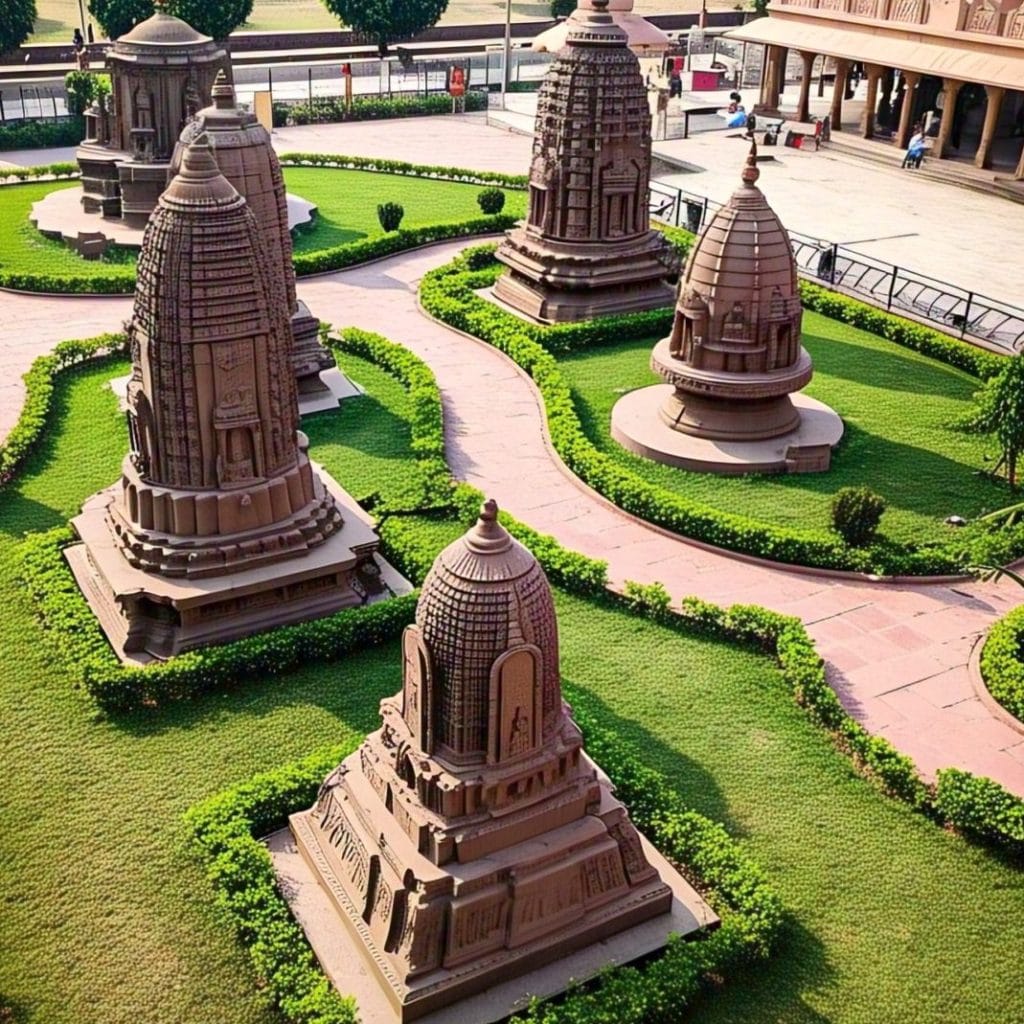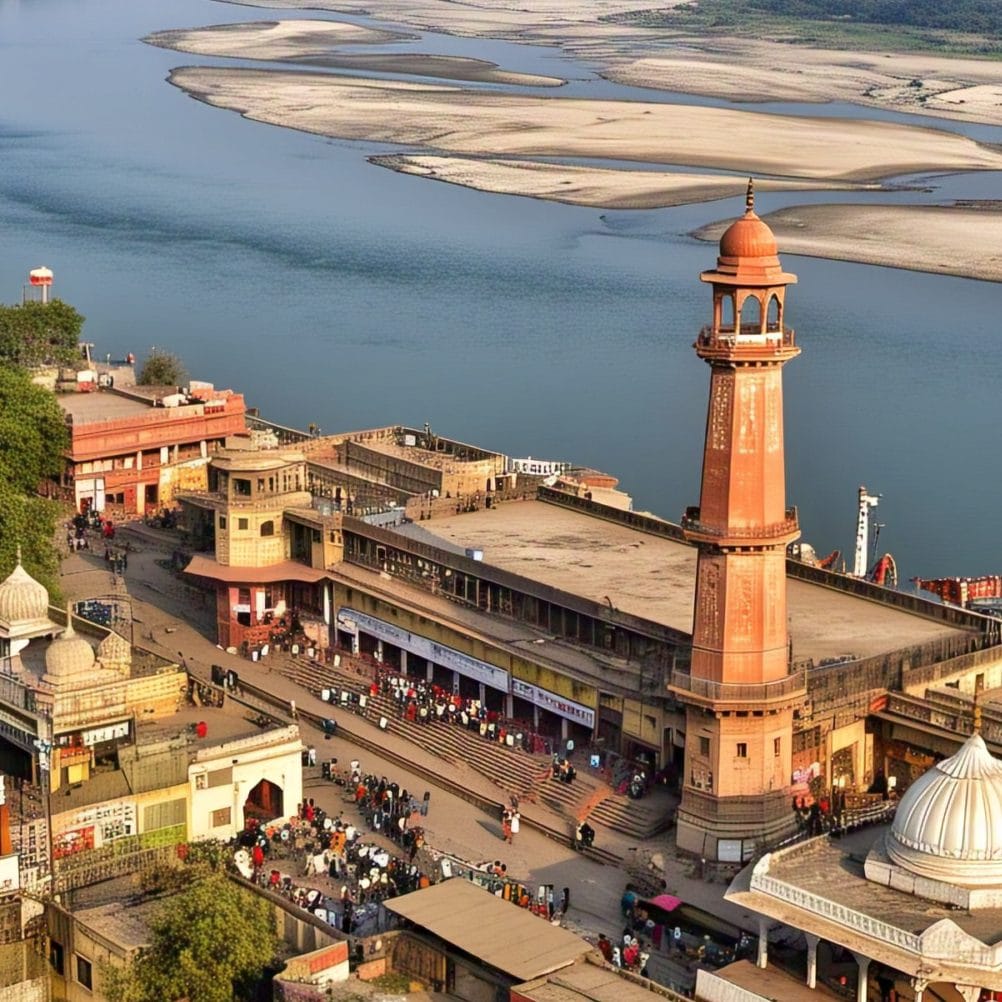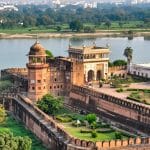Allahabad Fort
Standing regally on the banks of the sacred River Ganges, where it meets the Yamuna and the mythical Saraswati, the Allahabad Fort is one of the most magnificent legacies of Mughal Emperor Akbar’s rule. Constructed in 1583, this majestic citadel not only showcases the grandeur of Mughal architecture but also stands as a silent witness to centuries of political, cultural, and spiritual transitions. Guarding the Triveni Sangam—the confluence of the three rivers—this UNESCO-listed monument has immense historical, mythological, and strategic importance.

Historical Legacy: A Fort Commissioned by a Visionary Emperor
Emperor Akbar the Great, known for his tolerance and administrative foresight, chose Prayagraj (then known as Allahabad) for the construction of this grand fort due to its religious significance and strategic location.
- Built in 1583, the fort was designed as a symbol of Mughal dominance in northern India.
- It was intended not only to protect the imperial frontier but also to control the Triveni Sangam—India’s most sacred confluence point, which attracts millions of Hindu pilgrims, especially during the Kumbh Mela.
The fort served multiple purposes:
- Military garrison
- Administrative center
- Royal residence for visiting Mughal dignitaries
- Religious observatory due to its proximity to the holy rivers
Architectural Grandeur: A Blend of Power and Aesthetics
The Allahabad Fort is an exemplary fusion of Indo-Islamic architecture with hints of Persian influence. Akbar’s architects were masters of combining strength with elegance, and this fort is a testimony to that genius.
1. Colossal Walls and Strategic Bastions
- The outer walls of the fort, some of which still stand firm, rise to over 10 meters in height, showcasing the formidable military design.
- The bastions and watchtowers provided perfect vantage points to oversee movements on both land and river.
2. Grand Entrance Gate
- The fort’s main gateway is massive and intricately decorated, a hallmark of Mughal design.
- Flanked by high towers, the gate leads into a large courtyard surrounded by stone-built halls and chambers.
3. Three Main Galleries
- The fort originally had three main courts or galleries, comprising palaces, offices, and storerooms.
- These included Akbar’s audience hall, royal chambers, and barracks for soldiers.
Patalpuri Temple & Akshaya Vat: Sacred Spots Inside the Fort
Despite being a Mughal fort, Akbar respected the religious significance of the location. Inside the fort lies the ancient Patalpuri Temple and the mystical Akshaya Vat (Immortal Banyan Tree).
Patalpuri Temple
- Believed to be as old as time itself, this underground temple is said to have been visited by Lord Rama, Sita, and Lakshman.
- It’s also mentioned by Chinese traveler Hiuen Tsang during his visit in the 7th century.
Akshaya Vat
- The Akshaya Vat, or the “eternal banyan tree,” is one of the most sacred symbols in Hinduism.
- Legend says that this indestructible tree survived multiple cycles of cosmic destruction, symbolizing eternal life.
- Devotees believe that taking a dip at the Triveni Sangam and then visiting Akshaya Vat brings spiritual liberation (moksha).
Note: Public access to Akshaya Vat and Patalpuri was restricted for years, but in recent years, with special permissions or during Kumbh Mela, they are occasionally opened to the public.
British Era & Modern Use
During the colonial period, the fort was taken over by the British East India Company, who used it as a military base and administrative headquarters.
- The fort’s massive storage and barracks were utilized to house troops and manage colonial operations in Northern India.
- Even today, a large portion of the fort remains under the control of the Indian Army, and entry to many areas is restricted.
This restricted access has ironically helped preserve the structural integrity of many parts of the fort that might otherwise have suffered from wear and vandalism.
Strategic Importance at the Triveni Sangam
The positioning of the fort at the Triveni Sangam—the holiest point in Hinduism—has always added to its significance:
- It allowed Akbar to control both religious pilgrimage traffic and commercial river trade.
- The fort also offered a base to monitor political developments in the Eastern Gangetic plains.
During Kumbh Mela, the world’s largest religious gathering, pilgrims throng to the banks of the Sangam for a sacred dip. The fort becomes the backdrop of this enormous event, adding a mystical and historical aura to the spectacle.
Visiting Allahabad Fort: What You Need to Know
1. Location
- The fort is located in Prayagraj (Allahabad), Uttar Pradesh, near the confluence of the Ganga, Yamuna, and Saraswati rivers.
- Best accessed via Boat rides from Sangam Ghat or road through Fort Road.
2. Entry & Permissions
- Much of the fort is restricted due to army control.
- Access to Patalpuri Temple and Akshaya Vat is allowed with special permits or during religious events.
- Guided tours are limited, but local historians and private guides can help navigate permitted sections.
3. Best Time to Visit
- October to March is ideal, when the weather is pleasant.
- Visiting during the Kumbh Mela offers an unmatched experience, but expect crowds.
Photography Tips
- The outer ramparts and gateways are great for photography.
- Capture the sunset view from the banks of the Ganges with the fort in the background.
- During cultural festivals, the fort is often lit up and becomes a visual spectacle.
Nearby Attractions
When visiting Allahabad Fort, explore these nearby colonial and spiritual sites:
- Triveni Sangam – The sacred confluence just steps away.
- Anand Bhawan – The Nehru family residence turned museum.
- Chandrashekhar Azad Park – Historic site of Azad’s martyrdom.
- All Saints’ Cathedral – A Gothic masterpiece from the colonial era.
- Khusro Bagh – A beautiful Mughal garden and mausoleum complex.
Final Thoughts
The Allahabad Fort is not just a military marvel—it’s a sacred, historical, and cultural landmark that bridges the past with the present. As Akbar’s grand vision etched in stone, it reflects his keen eye for strategic brilliance and religious inclusiveness. Whether you’re a history buff, spiritual seeker, or cultural traveler, this monumental fort offers a deep and unforgettable journey into India’s layered past.





